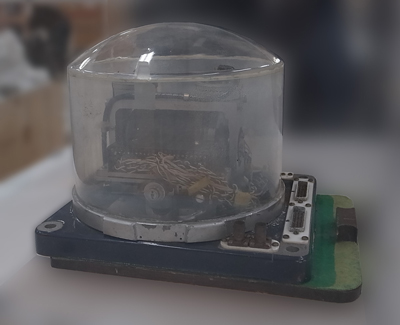

- Home >
- Artifacts of IP Heritage >
- 2008 >
- ETL Mark IV Plug-in packages and a magnetic drum
ETL Mark IV Plug-in packages and a magnetic drum



| Manufactured in | 1957 |
|---|---|
| Manufactured by | Electrotechnical Laboratory (now called National Institute of Advanced Industrial Science and Technology) |
| Owner | The National Museum of Nature and Science, Tokyo |
| Location of historical materials | The National Museum of Nature and Science, Tokyo 4-1-1 Amakubo, Thukuba-shi, Ibaraki 305-0005 Japan Tsukuba storage at botanical garden |
| Visitor information | Not open to the public (visit by appointment only) |
| Contact | Department of Science & Engineering webmaster@kahaku.go.jp https://www.kahaku.go.jp/ |
Electrotechnical Laboratory developed ETL Mark IV transistor computer in 1957 after developing ETL Mark III in 1956. ETL Mark IV used dynamic circuits just like ETL Mark III but used junction type transistors not point contact type ones used for ETL Mark III. The clock was synchronous, single-phase and 180KHz, and a high-speed magnetic drum was used for the memory unit (memory capacity 1000 words). Development was done by Takahashi Shigeru, Nishino Hiroyuki, Matsuzaki Isokazu, Kondo Kaoru, Aiso Hideo and Yoneda Hiroshi. The magnetic drum was developed by contracting the mechanical part from Hokushin Denki (which later became Yokogawa-Hokushin Denki, and now called Yokogawa Electric) and the magnetic part from Tokyo Telecommunications Engineering Corporation (now called Sony).
Internally, the machine was decimal-based and used the bit-parallel/digit-serial system. One word was comprised of 4 parallel bits and 6 serial digits. There were 29 types of instructions. Arithmetic operation speed was 3.4ms for addition/subtraction, 4.8ms for multiplication and 6.4ms for division.
The ETL Mark IV was completed in November 1957. This sparked the development of commercial electronic computers by numerous firms, including NEC, Hitachi, Hokusai Denki and Matsushita Communication Industrial.
Transistor packages and a magnetic drum used for ETL Mark IV are preserved at National Institute of Advanced Industrial Science and Technology.. A later enhanced model, the ETL Mark IV A, is currently preserved at the National Science Museum, Tokyo.
